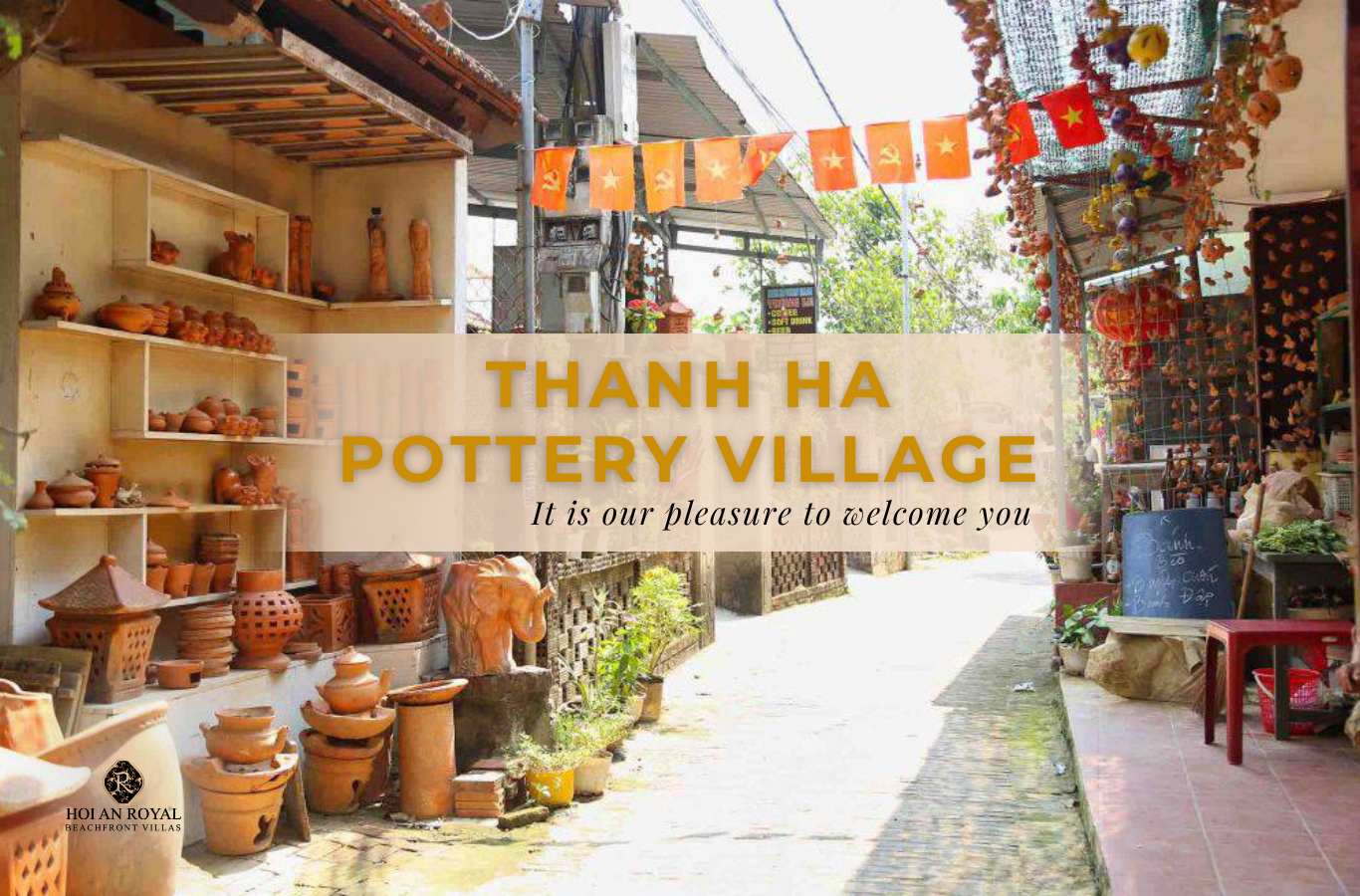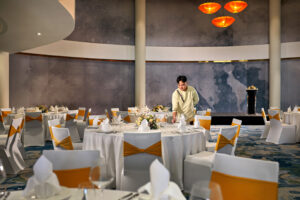Have you heard of Thanh Ha Pottery Village but aren’t sure when to visit, what makes it special, or what experiences to try? The article below from Hoi An Royal Beachfront Villas will give you a complete picture of your trip – from how to get there, exciting activities, to little–known facts about this renowned craft village in Central Vietnam.
Table of Contents
ToggleHistory and development of Thanh Ha pottery village
Thanh Ha Pottery Village dates back to the 15th century, when artisans from the North brought traditional pottery–making techniques to Hoi An, combining them with reddish–brown clay from the banks of the Thu Bon River – a precious material that laid the foundation for a unique handicraft village. In its early days, products mainly served daily life, featuring rustic shapes, no glaze, yet remarkable durability and sharp details that reflected the craftsmen’s skill.
In the 17th–18th centuries, alongside the flourishing of Hoi An’s trading port, Thanh Ha Pottery Village quickly became a large–scale production hub, not only meeting domestic demand but also entering international trade routes. The bricks and tiles made here contributed to the ancient architecture of Hoi An, becoming an inseparable part of the city’s cultural heritage.
From the 19th century onwards, thanks to its waterway trading advantage, pottery products were widely distributed to many provinces in Central Vietnam. However, as Hoi An’s port declined, the village also lost vitality, entering a quiet phase and at times facing the risk of being forgotten.
It was not until the late 20th century that the village began to recover. In 1997, it was recognized as a historical site in need of preservation, paving the way for restoration efforts. Especially after being recognized as a national intangible cultural heritage in 2019, the village experienced a remarkable transformation: integrating experiential tourism, reviving traditional festivals, holding the craft founder’s memorial, and attracting a large number of domestic and international visitors.
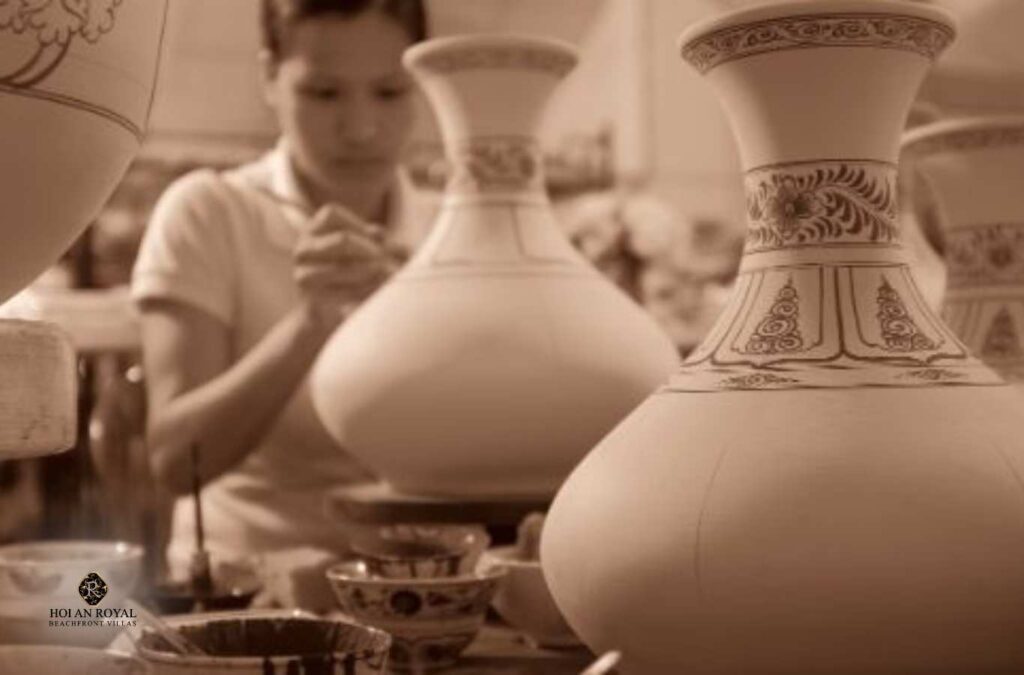
Where is Thanh Ha Pottery Village? The most convenient directions
Thanh Ha Pottery Village is located in Nam Dieu block, Pham Phan Street, Hoi An Tay Ward, Da Nang Province (formerly part of Thanh Ha Ward, Hoi An City, Quang Nam Province), just 2–3 km west of the ancient town – an ideal distance to combine a visit to the traditional craft village with nearby tourist attractions in the same trip.
The most convenient route from Hoi An Ancient Town:
- You can take Hung Vuong Street, then turn into Duy Tan, continue for about 500 m and turn left at the intersection where you will see a sign to Thanh Ha Pottery Village.
- Alternatively, you can follow the Thu Bon River to National Highway 1A, pass Thanh Ha Fish Market, and enter the village.
Popular means of transport include motorbikes, bicycles, taxis, or ride–hailing services. Renting a bicycle is highly recommended by many visitors as it is convenient for getting around while enjoying the atmosphere of Hoi An Ancient Town.
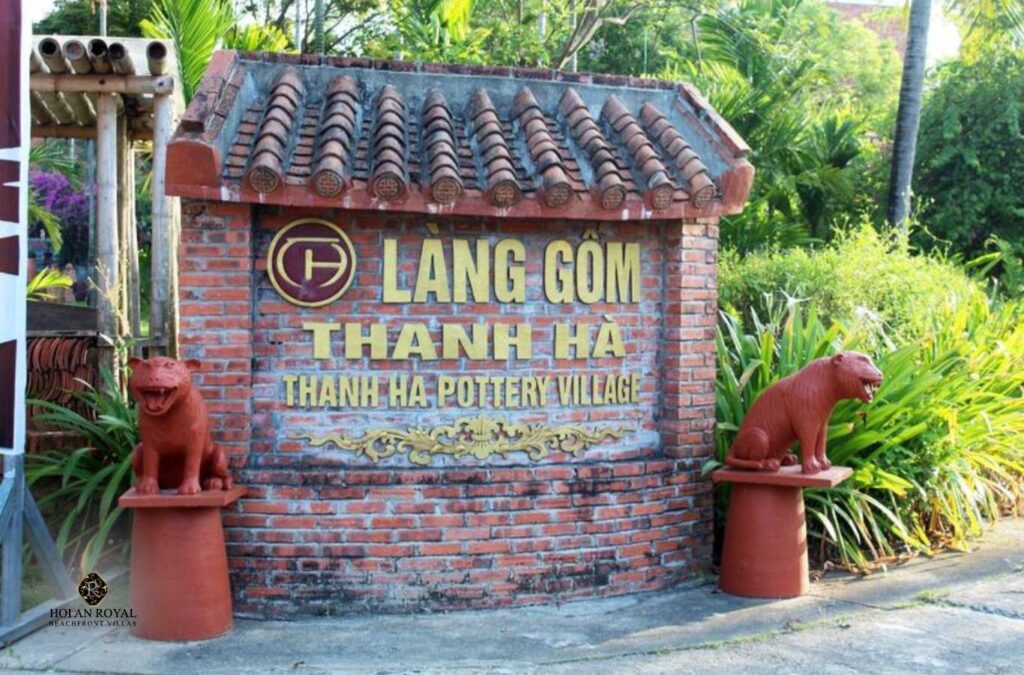
Opening hours and entrance fees
Thanh Ha Pottery Village is open daily from 8:00 AM to 5:30 PM.
Current ticket prices are:
- Adults: 35,000 VND/ticket/visit
- Children: 15,000 VND/ticket/visit
This ticket includes activities such as visiting the craft village, watching artisans make pottery, trying your hand at making pottery, and exploring the village’s historical sites. Groups of 8 or more enjoy free guided tours. Note that opening hours may change depending on the season and events, so it’s best to contact in advance for accurate updates.
Best time to visit Thanh Ha Pottery Village
The best time to visit is from February to April each year, when the weather is cool and dry – perfect for traveling and outdoor activities. During the day, it’s recommended to come in the early morning from 8:00 to 10:00 or late afternoon around 3:00 PM to avoid the midday heat of Hoi An and have a more comfortable experience.
If you wish to join special cultural events such as the craft founder’s worship ceremony, you can plan your trip for the 10th day of the first lunar month each year, when the village holds its traditional festival with many fascinating folk activities.
5 must–try activities in Thanh Ha Pottery Village
Learn about the history and culture of the pottery village
Upon entering the village, you will hear stories passed down through generations about a craft village that has existed for over 500 years, founded by artisans migrating from the North (Thanh Hoa, Nam Dinh, Hai Duong in the past).
Not only famous for pottery craftsmanship, Thanh Ha also preserves unique cultural values such as the craft founder’s memorial held annually on the 10th day of the first lunar month, associated with the worship of the Fire God and Earth God. This traditional event has gradually evolved into what is now known as the Thanh Ha Pottery Village Festival, attracting both locals and travelers who wish to experience authentic cultural heritage.
You can also stroll through heritage sites such as the communal house and Nam Dieu Shrine – sacred spaces deeply connected to the villagers. Especially during the founder’s worship ceremony, the village comes alive with activities such as palanquin processions, woodturning, and clay–pot cooking, recreating aspects of the village’s traditional cultural life.
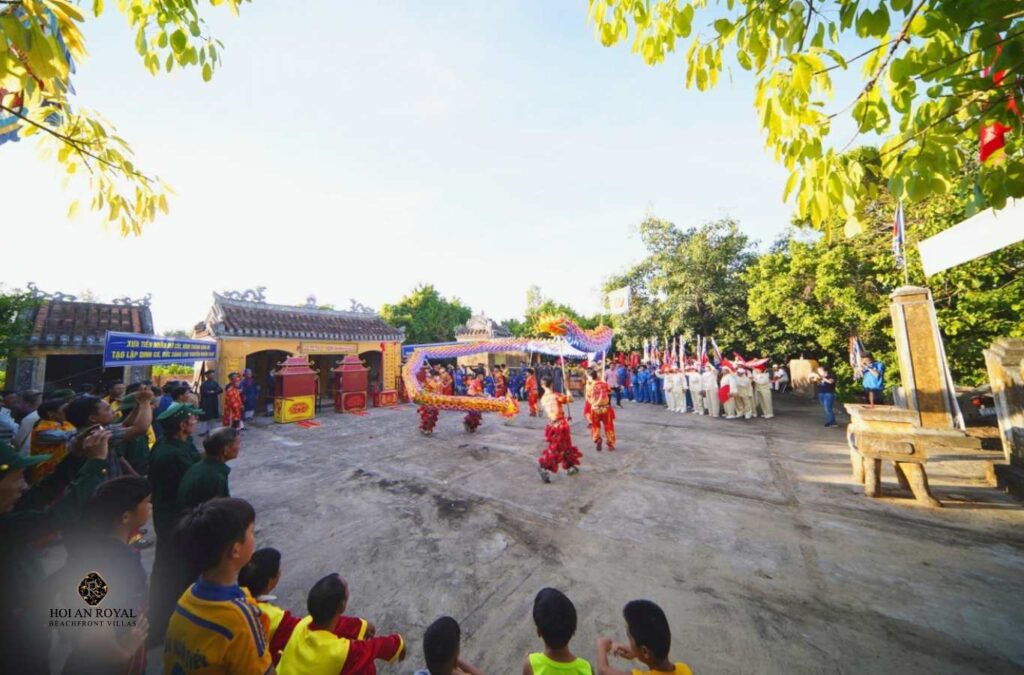
Watch the traditional pottery–making process
One of the most engaging experiences in Thanh Ha is witnessing the manual pottery–making process – from selecting clay, kneading, shaping on the wheel, carving patterns, drying, to finally firing in wood–fueled kilns.
All steps are carried out by skilled artisans with meticulous care passed down through generations. Thanh Ha pottery does not use chemical glaze but retains its natural colors such as reddish–brown, pink, black, or brick–red, giving it a rustic and distinctive charm.
Seeing each stage with your own eyes allows you to truly appreciate the value of handmade craftsmanship and the creativity embedded in every product.
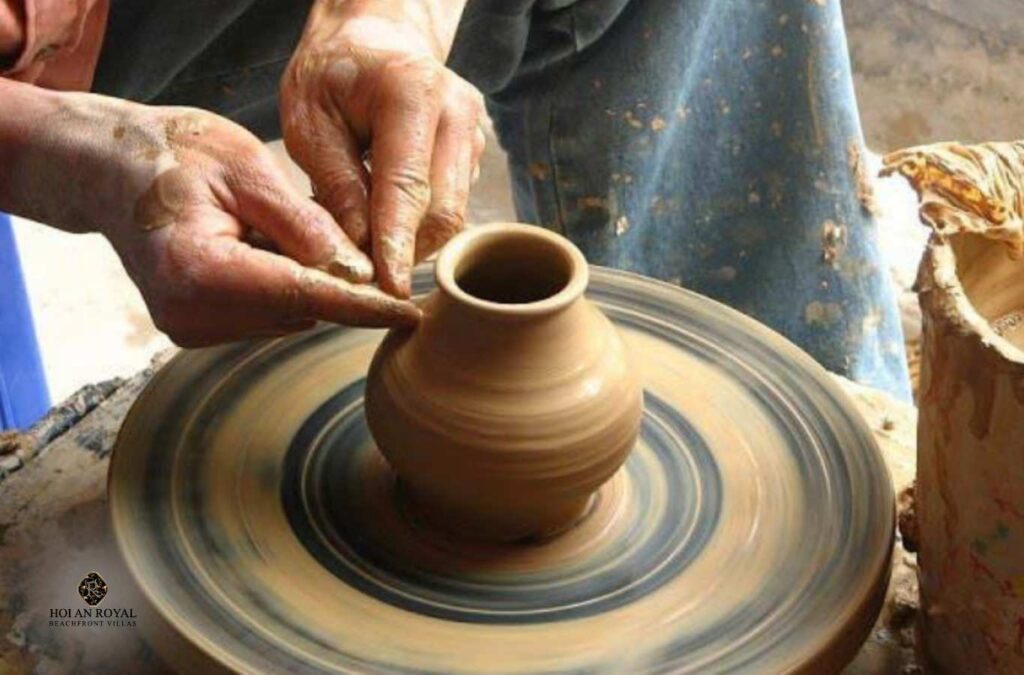
Try making pottery yourself
This is one of the most popular activities – where you can knead clay, spin the wheel to shape, and decorate your product in your own style.
Even if you have never made pottery before, you can easily get started with the detailed guidance of the artisans. From children to adults, anyone can create a handcrafted piece with a personal touch.
Once completed, your product will be fired and sent to you as a unique souvenir. This is not only a fun activity but also a way to connect with the traditional craft and better understand the love artisans pour into each block of clay.
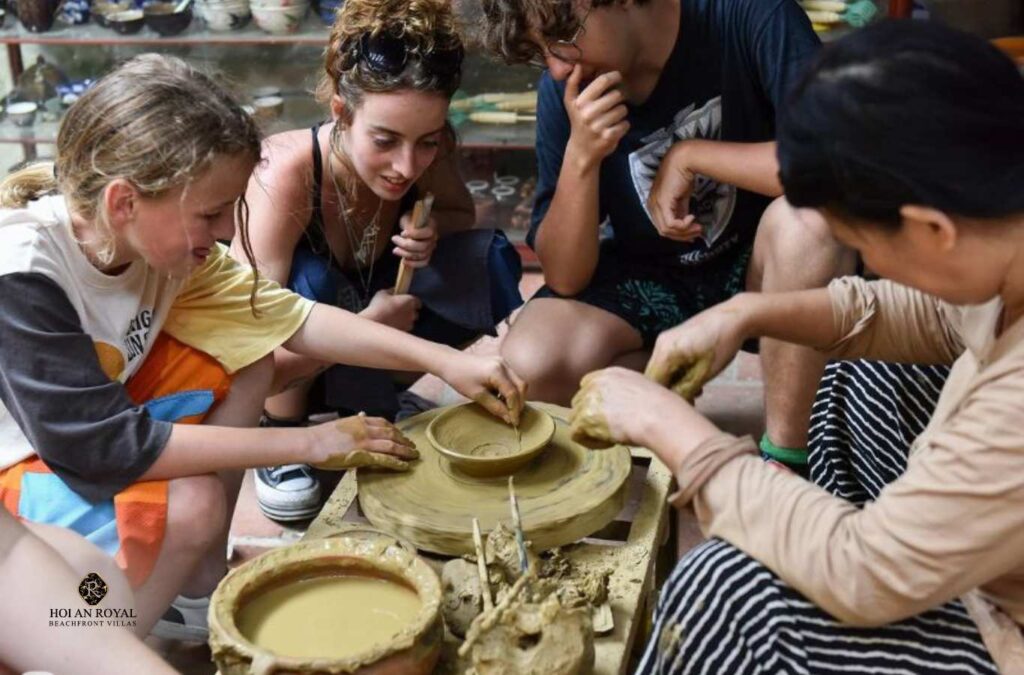
Visit Thanh Ha terracotta park
A must–see when exploring the pottery village is Thanh Ha Terracotta Park – the largest pottery park in Vietnam, covering nearly 6,000 m², home to thousands of unique ceramic artworks.
The space impresses visitors with its elaborate layout, from terracotta models recreating world wonders to the village’s traditional products displayed with finesse.
The park is divided into specialized zones such as the kiln area, craft preservation area, terracotta market, miniature world, art installation garden, Sa Huynh – Cham pottery zone, and themed exhibition rooms. Each area offers a different perspective on the formation, development, and continuous creativity of Thanh Ha pottery art.
Serving as both a place to visit and learn, as well as an ideal photo spot, the terracotta park is a distinctive highlight that brings the image of this traditional craft village closer to visitors from near and far.
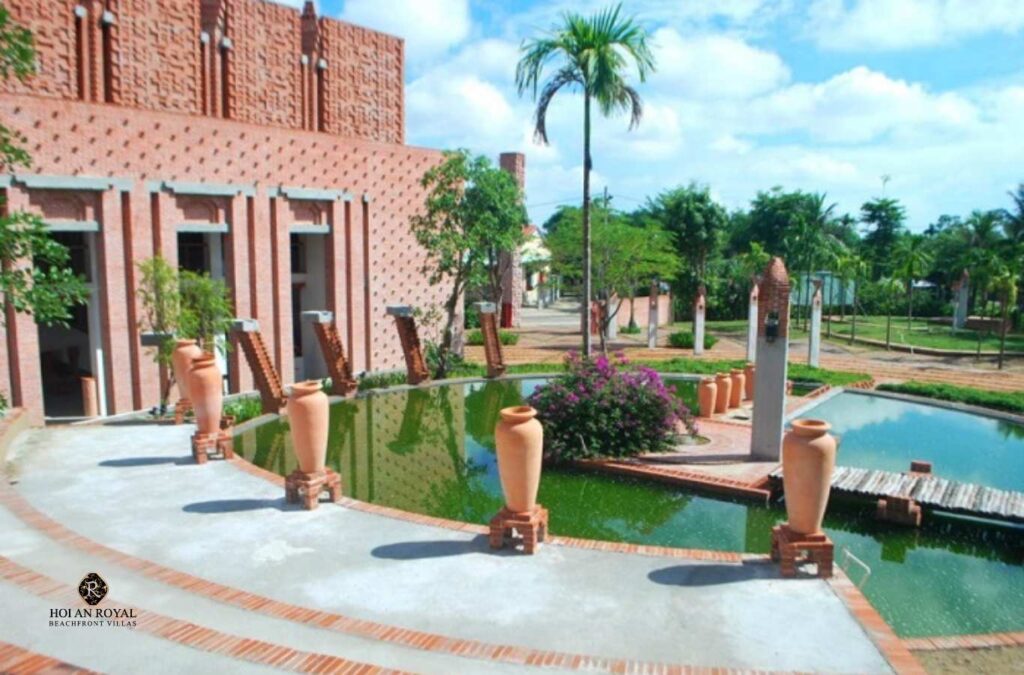
Admire and shop for handcrafted ceramic art
A trip to Thanh Ha Pottery Village would not be complete without stopping at the pottery stalls to admire and shop for exquisite handmade products.
From the reddish–brown clay unique to the Thu Bon River area, artisans have crafted a diverse range of items such as teapots, vases, figurines, flower pots, worship objects, decorative pieces, and charming souvenirs that embody the soul of Quang pottery.
The products are not coated with chemical glaze but retain their natural earthy colors – reddish–brown, brick red, pink, or black – giving them a rustic, warm, and authentic look that reflects the meticulous handcraftsmanship of the artisans.
The pottery market and shops in the village are ideal places to find culturally rich gifts at reasonable prices. Beyond shopping, holding each piece in your hand and feeling the fine handmade details is an artistic experience unlike any other.
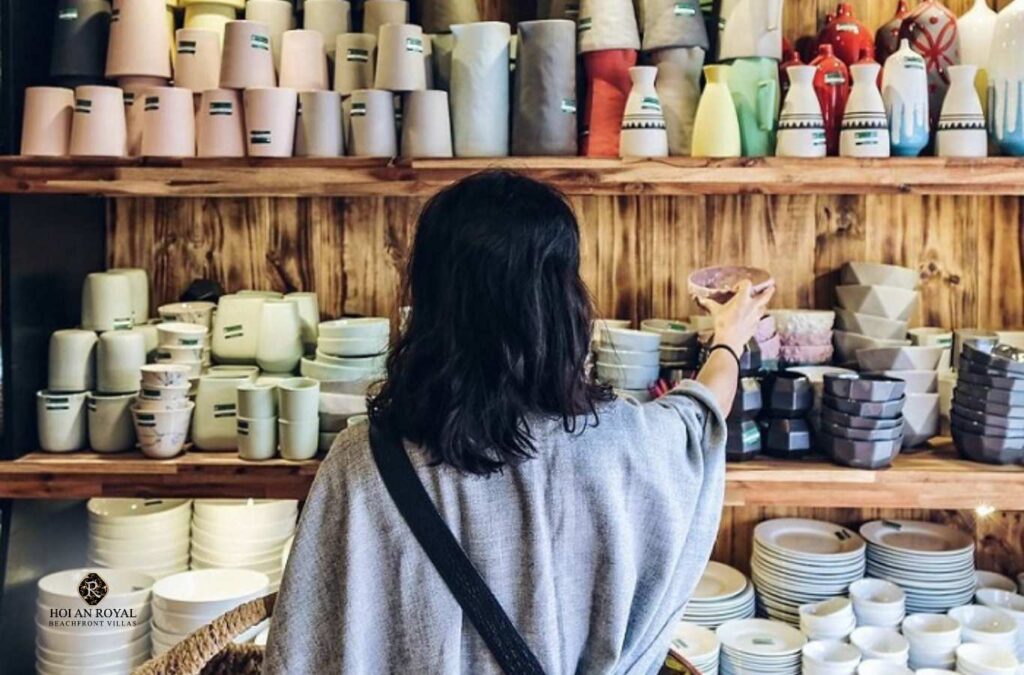
Travel tips for Thanh Ha Pottery Village
Travel tips for Thanh Ha Pottery Village will help you fully enjoy the cultural, historical, and experiential values of this long–standing traditional pottery village in Hoi An:
- Bring a hat, umbrella, or light jacket: Hoi An’s sun can be quite intense, especially at midday in summer, so having sun protection will make your trip more comfortable.
- Wear suitable clothing: Opt for lightweight, easy–to–move–in, and washable outfits, as clay may stain your clothes during pottery–making activities.
- Book a guide or group experience in advance: If traveling in a group of 8 or more, contact ahead to arrange a free guide and avoid waiting during peak season.
- Bring personal drinking water and wet wipes: Since you’ll be moving around outdoors, staying hydrated and clean when trying pottery–making is important.
- Be mindful of the craft space: As this is a historical site, walk carefully in the pottery areas, and do not touch drying products or production tools without the artisan’s permission.
- Take souvenir photos: The village is very picturesque, especially in the small alleys, the terracotta park, and around the kilns. Ask the artisans for permission before photographing them at work to show respect.
Amid the pace of modern life, Thanh Ha Pottery Village quietly preserves a piece of the soul of Quang land. Without noise or showiness, the village’s rustic charm, refinement, and resilience have sustained its vitality. A short trip from Hoi An Royal Beachfront Villas to this place can often leave a lasting impression on a traveler’s heart.
